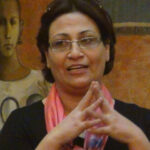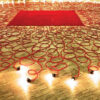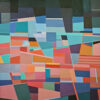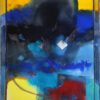Matter feels, converses, suffers, desires, years, and remembers
Karen Barad
Observe a handful of soil, how is it related to humans? Soil contains a lot of living and non-living organisms that can form a highly evolved communicating network of living organisms, mold, dissolved matters, and perhaps something of more complication like a worm or an insect. The similarity between humans and this handful of soil could be more apparent if we considered the fact that 90% of the cells in the body don’t contain human DNA. This type of relation is the intuitive entanglement between the many living and non-living species: a system of inter-relations, in which each entity relies on the other to survive or a developing a mutual living concept and theories for cause and effect. Still, the kind of entanglement between multiple types that we’re going to talk about here is less intuitive and more complicated and purposeful. It refers to a new Metaphysics that comes after postmodernism and post-structuralism in the time of biotechnology and nanotechnology, and post-human and the new materialistic reality. This new metaphysics comes as a result of advanced knowledge inspired by the scientific method, which predominated the deliberations of continental philosophy and arts. This interference among sciences and humanities is so unprecedented since the emergence of science back in the 18th century to replace art and narrations of origin as the creed of truth.
“Agential Realism” is a neologism introduced by Karen Barad – a philosopher, feminist, and quantum physics scientist. This term is a vivid example of how we can neutralize the Scientific Epistemology theory and the cultural theory, and is also an example in which intra-species entangles could emerge via a process she described as “Intra-action”. “Intra-action” could be simply understood as a mutual emergence and transformation, with a change in limitations. The context in which “Intra-action” happens is the context in which the matter is important, and materialistic entities do not exist prior to “Intra-action”, and the boundaries between materialistic phenomena are constitutional boundaries. Before we dive into the aesthetics of variations, let’s first talk about practical examples of “Intra-action” in the world of art. An exhibit titled “The Multispecies Becomings in the Anthropocene” 1 in Sydney, Australia in 2013 had great success. The exhibit process shifted between measures, times, species, and geopolitical locations, in addition to influencing material powers and materiality of ideas and merged and emerging bodies in the constant becoming. The exhibit has provided a space for the “Intra-action” idea to cross the borders of art practice. Many artists, scientists, theorists, and philosophers participated in the exhibit, and Karen Barad herself was among them.
Marnia Johnston participated in the exhibit with a piece titled “Rovers prototype” or “Terrestrial Exploration + Nurture Designed, 2013). Her work falls within the idea of wide exploration of multiple living entities away from humans and their favorite animals. (Rovers) an interactive art project that explores migratory ecology in an era of climate change. The rovers are robotic fostering environments that care for their own garden of native plants by interacting with articipants and actively seeking out light and water. The design team consists of artist Marnia Johnston, project creator and materials specialist, and Corey McGuire, hardware consultant and Linux development. Eben Kirksey also, the exhibit curator, also added an extra feature to the “Rover” by making him able to collect the falling leaves and weeds from the borderline urban areas. The point here was to evoke thinking about justice for all species while we’re wondering if the robot should save a plant previously judged by humans as weed. 2 It is not about making a statement, but mainly poking at the penetrable membranes of justice, and instead of celebrating human uniqueness and privileges, we should refocus the analytical privileges on the multiple bounds, heterogeneous reactions, and non-human connections. Looking through the posthumanism lens, “the human species, and the qualities of self-reflection, self-awareness, and rationality traditionally used to distinguish it from the rest of nature, may now seem little more than contingent and provisional forms or processes within a broader evolutionary or cosmic productivity” 3
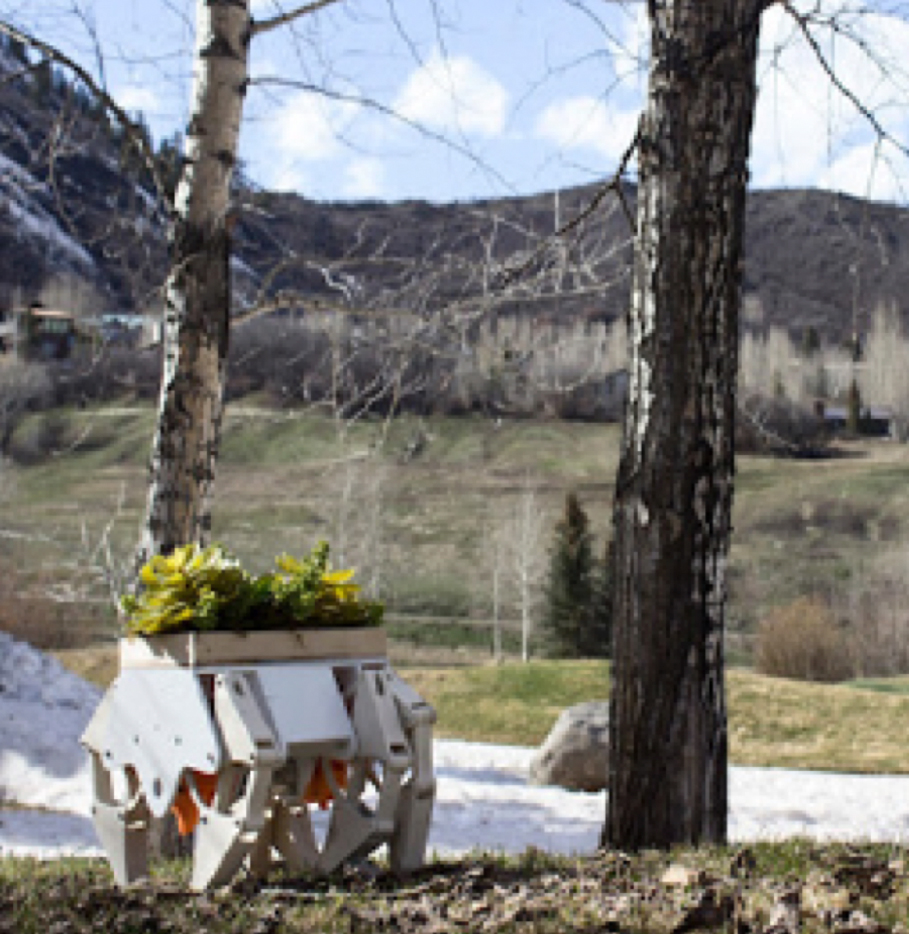
In another example, Elaine Gan & Anna Tsing, in their piece (Fungal Time in the Satoyama Forest, 2013), pose the question of how can we activate the intra-actions as a series of chronological patterns and homogeneity between multispecies? This piece is just a small part of the constant collaboration between an anthropologist & artist; and Matsutake mushroom and their hosts in the Pine Forests. By manipulating the fungal clock, we come upon a terrifying articulation of the encounters between species that reveals varied senses of time, history, location, and space, in such an overly experimental and speculating piece. Satoyama is the idealized peasant landscape of central Japan.
“Satoyama refers to the living assemblage of woodlands, gardens, rice fields, water channels, and village paths. We perceive the forest as a manifold of times, a recursive patch that both shapes and emerges from durational yet indeterminate encounters between many species. We invite audience to observe the timely indeterminate patterns of growth for the fungus hyphae which appear to be in consistency with other species behaviors, including humans. Two-channel video installation offers a partial view of what Karen Barad calls “intra-action”. Here, walking becomes a series of temporal patternings that are synchronized between a forester’s movements above ground and fungal growth underground. The photograph in the background shows satoyama, this installation begins to describe satoyama as a manifold of times, a recursive patch that both shapes and emerges from durational yet indeterminate encounters between many species.” 4
This exhibit along with multispecies arts are unique for their inclusion of all species; human, animal, fungus, viruses, plants, microbes, noxious weeds, pests, and so on. When you consider “multispecies” term, it invokes a non-binary and a non-human perspective, exceeding the “human-animal” to include all ranges of life, wide as they might be, and even non-life where we find viruses and transposons. The exhibit introduces an individual point of view that could be neutral through other non-human aesthetic projects.
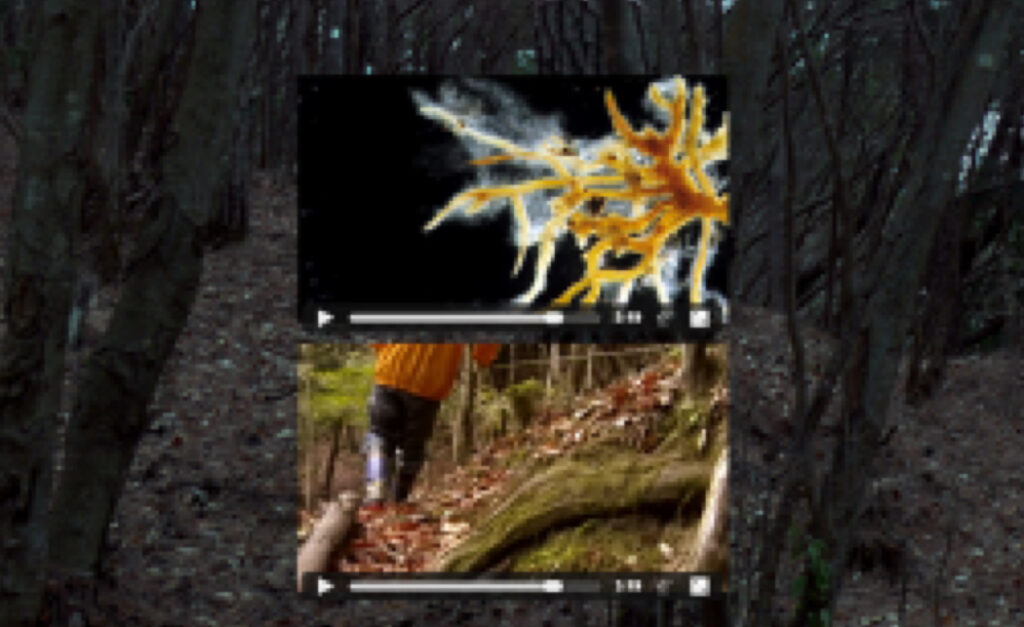
With the current controversial debate about the types of arts that go along with posthumanism, Cary Wolfe presents a strong argument against the visual picture, saying that the visual position is so human focused. We can only say that the popular visual aesthetics today are particularly related to visual marketing, which is increasing since the 50s. As a result, some of the visual media now are serving the capitalist economy values, which naturally compromises the justice for non-human species. Kathy High, in her work (Mr. Fox, 2012), challenges this perception. “Living in a rural area allows one to witness the seasonal road kills. This up close and personal image of a slain fox almost seems comically “alive” in its expression.” 5 The fox, being a strange animal after being moved to Australia, is considered a “pest” that must be eradicated, and perhaps this “Death Look” of this fox could save other foxes from being killed. This shocking image could also challenge the concept of beauty being a standard for art.
Working with animals could be so much easier if the artist didn’t require the animal to become a total stranger to itself. As a matter of fact, many artists engage animals simply by emulating the animal’s natural behavior. For instance, there is a thriving method of collaborating with bees, spiders, ants, or other insects as parts of sculpturing projects.
A whole series of artworks have been developed in which artists and human-made objects cleverly deal with animal herds or the animalistic architecture. All the artist does mostly is make a simple intervention in the natural constructional methods of a bee, for example, or track the paths of a moving insect, then he introduces the resulting entity or drawing as a mutual work. Butterflies also appear to be art makers, just by doing what they naturally do. Joos van de Plas gives the butterflies printed papers, cardboards, or plastics shaped like a butterfly to build their temporary homes. After the butterflies break free out of their cocoons, they leave them behind, empty and small. Van de Plas refers to Caterpillars as “co-workers”, so it is not only about the artistic creature that transforms in those processes, but the person who participates, redefines his position and experiences the disassociation of his role in the artistic process: the human material or their interference in the performance transform to become just one of the elements within a (world) for other animals .6

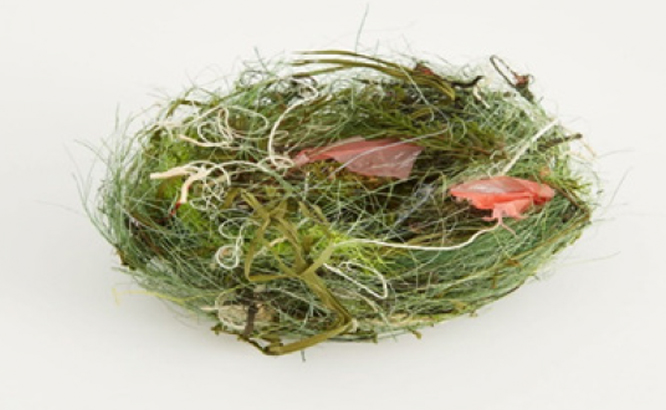
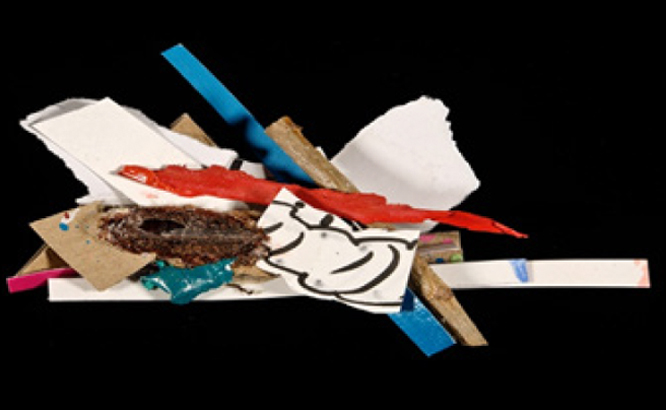
Björn Braun started a resembling process through a series of sculptures with birds. Braun provides two of the Isabel with different materials; natural and artificial such as colored plastic threads or yarns, which they use to build their nests. Human artists cannot steer or anticipate where the cocoons or nests will be built, and although they can affect the final appearance by providing certain materials, they mainly rely on the animal constructive skills. These cooperative works have posed questions around the traditional concepts of the creator and the artwork, and they contradict the artistic myth that they rely on the inspiration and genius mind of humans or the self-discipline expression. These multispecies artworks criticize the old concept of the sole creator who has control over his work by being the creative mind, creator, and intentional center for art. 7
Still, humans themselves cannot fully comprehend the aesthetical properties of birds or insects architecture, at least when it comes to color structures. Humans are the only ones who suffer, compared to many birds and insects, from the low capability to see colors and they cannot comprehend the variety of colors in their construction and structures. Zebra Finch nests that Braun showed could have many aesthetical dimensions that the artist, and the human audience, cannot appreciate, and can only be admired by birds themselves.
Sometimes the engagement level of the animals could impede the artwork. If animals refused to participate, there won’t be an artwork, or at least, the artwork would be completely different. Thus, the engagement in the art opens the door for a relational art, through which we can get to know more about the encounters of individuals from multiple species and the inter-relationships between them that could provide a productive and creative value. This new perspective about effectiveness and animalistic effectiveness could also be seen as a political tool to further limit the human pyramid of exception. Animals were previously seen as instinct-driven entities, but now we see them as social creative entities with whom we can interact. This paradigm shift can now contribute to the moral admission of them so we can achieve justice for all species on Earth. The artists contributing to multispecies art realize that cognitive, communicating, and creative capabilities of both animal and other living entities have their own aesthetic dimensions. Those capabilities could generate a world, and reshape the artistic relations, so we can argue that “Art can be seen to emerge in the involvement with materials, methods, tools and ideas of practice”8 this takes the importance away from the produced entity and the artwork and place it on the creation and practice of art.
Since we know there might be other aesthetic perspectives for animal art, such as those related to the sense of smell, hearing at very low or very high frequencies, and other sensing abilities like chemical communication, we can now see clearly that humans are not the perfect judges for art when it comes to the creative production of animals. The human aesthetic experience might be poor and misleading, at least in birds and insects world, in case humans insisted on staying in their safe and binding space, and rating art judging on it.
Now coming to the heart of the issue, can we get rid of our biases, which revolve around the human, so we can redraft our aesthesis theories, which suppress all of our non-human companions on Earth? In other words, how are these ontology and posthumanism epistemology related to the practices and theories of contemporary art? The dialogue between philosophy and aesthetics is not something new, what’s new is the artists showing interest in studying the philosophy of science, which doesn’t straightly deal with aesthetics.
One step could push this discussion forward. So when we remember that “aesthetics” terms is generally misinterpreted as being a term for “beauty”, and “beauty” is an ever-changing concept due to the culture and it is centered on the human. While “Aesthetics” is derived from Greek origins related to “sense perception, sensational, perceptional, and response of senses”. Alexander Baumgarten suggested the common perception of the word in 1735, and explained that aesthetics are concerned with beauty and taste judgments, including the intrinsic characteristics; which was in favor of the classism and social oppression. 9
Kant criticized Baumgarten’s aesthetics as being inaccurate due to a philosophical and derivative basis, and he assigned the term Ästhetik to mean “Science that deals with sensible cognition principles” by going back to the origins and roots of the word. 10
The intimate relation of the personal sensible experience of art has been ruined, and became a commodity on account of Baumgarten’s specification of the terms, which gained wide popularity. During the last decades, many authors have thoroughly inspected this area from a more comprehensible perspective – which indicated that taste or value judgments are culturally developed – arguing that the ratings for any artwork aren’t universal, but contextual, and change with the change of audience, recipient, location, era, and medium, etc. aesthetical features, such as beautiful, modern, superior, or ugly, don’t exist as intrinsic characteristics, or we can say, their existence is not prior to the personal relations that we experience through them.
The original meanings of the word aesthetics are relational, communicative, and performing; and going back to these meanings requires questioning the capitalist commodification of aesthetical experience. Aesthetics, in term and in practice, align with Barad’s definition of effectiveness, describing it as a “relational enactment” instead of a characteristic that one might have or negatively notice. If we were to accept Barad’s thesis, that phenomena (including ourselves) are practically created by the world’s constant self-construction, this necessarily means that our experiences with these phenomena (including ourselves) are also dynamic “Intra-action” experiences. Aesthetics then are performing dialogues that interchangeably affect and get affected; they’re dynamic dialogues of sensible cognition and responses.
After that, why can’t we envision that a bird experiencing his friend-bird calls has both an aesthetical aspect and a functional necessity, together, equally? Why can’t we admit that the aesthetical experiences are beneficial for making survival decisions? The ability for aesthetical selection – apart from the pure sensible recognition has, in reality, a survival value to many species, and probably to all of them. Those criticizing the current art world, when they face the refusal of the multispecies formation and aesthetics, mainly face two challenges; the widespread of “functionality” as a dominant characteristic of art, and the bogeyman known as humanism.
The “functionality” aspect remained to be a characteristic of aesthetics, and was being presented relentlessly in the Western Criticism for more than a century, but discussing it won’t fit this article’s subject and pages. Still, with regard to skeptical art theorists, we propose to reconsider the studies of evolutionary biologists, evolutionary psychologists, aesthetics scientists, and multispecies intellectuals. The concept of aesthetical judgment having a survival value is generally accepted within these fields, and survival means having a set of functional necessities. The idea that aesthetical features are a luxury, not a necessity (or at least furthering survival) is a residue of Baumgarten’s explanation of aesthetics, which was long forgotten.
In order to gain a new vivid understanding of art, we need to ask those classical criticism questions about audience and aesthetics, the social and political objective, and the formalism issues. Posthumanism art requires moral aesthetics, represented by empathetic listening and mutual response, to create a better world; and find the mutualism in rich relationships and the determinacy to engage in “intra-actions” processes. The willingness to hear “The Speaking Silence” or the unheard complaints of the unknown agents, along with considering the “possibilities and impossibilities of comprehending” is an aspired start and an essential goal to posthumanism aesthetics.
1. Intra-action: Multispecies becomings in the Anthropocene Art Exhibition for the Australian Animal Studies Group Conference 2013, University of Sydney It can be downloaded via the link: https://www.mop.org.au/pdf/130711.pdf
2. TE+ND (Terrestrial Exploration + Nurture Designed) Rovers. last visited: 6/2/2022. http://www.tendrover.com/
3. Coole, D. and Frost, S. (eds.) (2010) Introducing the new materialisms. In: New Materialisms. Ontol-ogy, Agency, and Politics. Durham, NC; London: Duke University Press, p. 20.
4. FUNGAL TIME IN THE SATOYAMA FOREST, 2013. last visited: 6/2/2022. http://elainegan.com/satoyama.html& http://elainegan.com/index.html
5. Mr Fox – Kathy High. (2012). Last visited:6/2/2022. https://www.kathyhigh.com/projects/mr-fox/
6. Joos van de Plaas: galerie wet. Last visited: 12/2/2022. https://www.galeriewit.nl/kunstenaar/joos-van-de-plas
7. Björn, Braun. (2015). Untitled (zebra finch nest). Last visited: 12/2/2022. https://marianneboeskygallery.com/artists/53-bjorn-braun/works/16621-bjorn-braun-untitled-zebra-finch-nest-2015/
8. Bolt, Barbara. (2004). Heidegger, handlability and praxical knowledge. The Australian Council of University Art and Design Schools (ACUADS) Conference. Canberra. P:116. http://acuads.com.au/conference/2004-conference/
9. Oxford Dictionary. Third edition, 2011. University of Washington Digital Library www.oed.com.offcampus.lib.washington.edu
10. The Previous Reference
A Palestinian researcher, translator & author. She holds a Master's Degree in Biotechnology and a Master’s Degree in Psychology. Her main research interests are postmodernism studies and biopolitics. She’s the author and translator of numerous books on Art and Culture.


